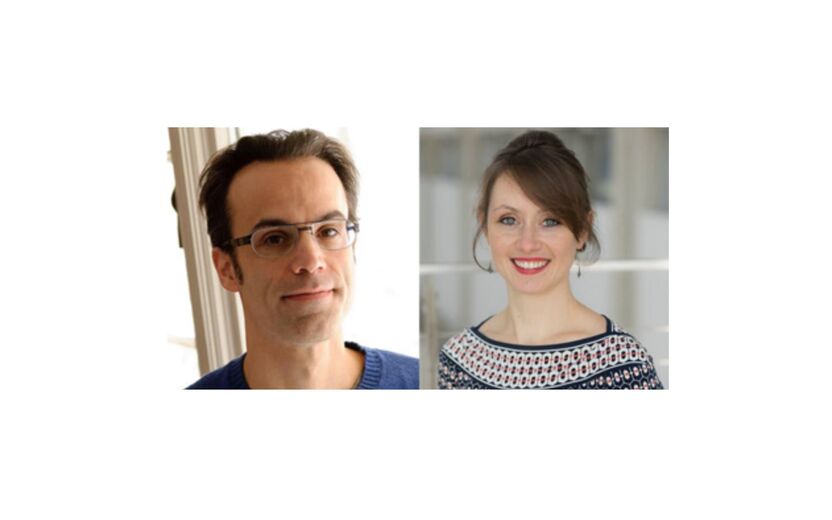Partnership in EPP and STEM Ed Research: Particle Tracking at the HL-LHC and in STEM Education

In the realm of particle physics, researchers confront fundamental symmetries, the nature of mass, the dimensionality of space, and the cosmological origins of the universe.
Despite the monumental potential of this research, only a relatively small number of physicists are actively engaged in these investigations, typically at the graduate student level and above. And the diversity of this research community does not accurately reflect the diverse makeup of the U.S. population.
A new research project led by Natasha Holmes and Peter Wittich, professors of physics in the College of Arts and Sciences and the Cornell Laboratory for Accelerator-based ScienceS and Education (CLASSE), has received significant recognition and funding from the National Science Foundation. This project aims to delve into the symmetries of the universe at sub-atomic scales while simultaneously promoting diversity, equity, and inclusion in the world of experimental particle physics - bridging the gap between cutting-edge scientific research and undergraduate physics education.
The project's core objective is to pave the way for the next era of discovery and diversity at the Large Hadron Collider, LHC.
"We do a lot of great science at the LHC, with a worldwide collaboration of scientists and engineers. But a big hole is getting some of that science to our undergrads," said Dr. Wittich of the Laboratory of Elementary Particle Physics (LEPP). "This grant will help us study how best to translate real research being done now to the classroom."
"The whole grant is focused on this idea of: can we bring actual modern physics concepts and ideas into the undergraduate curriculum and what does that look like?" said Dr. Holmes of the Laboratory of Atomic and Solid State Physics (LASSP). "This kind of curriculum could excite different kinds of students in very different ways than a typical physics curriculum does. I am excited by the possibility that this could inspire students who may not be inspired by rolling balls down ramps or swinging pendulum bobs, but by building a particle detector, and thinking about cosmic rays. This could inspire a different kind of student than just a typical intro physics class can inspire."
To broaden the project's impact, the investigators are committed to developing and assessing strategies to increase diversity within the particle physics community and expand the participation of minority students in this cutting-edge research field by utilizing Physics Education Research (PER) tools and approaches.
A pivotal aspect of the initiative is the development and evaluation of instructional materials that will be deployed in laboratory courses and undergraduate research groups, particularly by implementing Course-based Undergraduate Research Experiences, or CUREs. While CUREs is common in biology education, the research team aims to assess the efficacy of the CURE framework in reshaping physics education.
This endeavor represents a unique collaboration between experts in Experimental Particle Physics (EPP) and Physics Education Research to design discipline-specific, authentic, and educationally sound materials that will benefit both the classroom environment and the ongoing research at the LHC.
The LHC, renowned for its groundbreaking research on elementary particles and their interactions, notably led to the discovery of the Higgs Boson, a critical milestone in our comprehension of the universe's early history. The project is now gearing up to unlock new horizons in particle physics with the High-Luminosity LHC upgrades (HL-LHC), particularly the Compact Muon Solenoid (CMS) Upgrade, being led in part by Cornell University.
Dr. Holmes emphasizes how unique this opportunity is for physics. "This NSF award represents a promising step forward in unraveling the universe's deepest secrets while making scientific research more inclusive and accessible to a diverse array of aspiring physicists."
Funding for this project is jointly provided by the NSF's Physics Division (PHY) and the Division of Undergraduate Education (DUE) within the Directorate for STEM Education (EDU).
